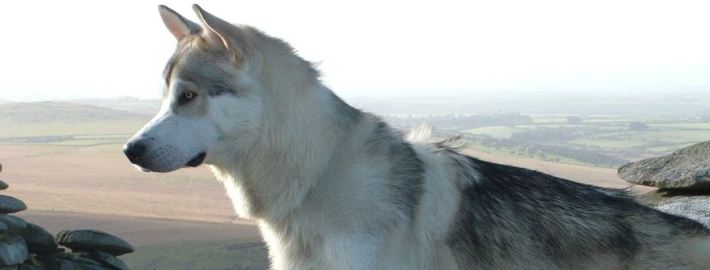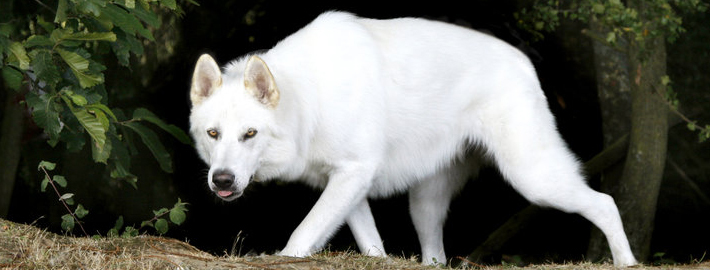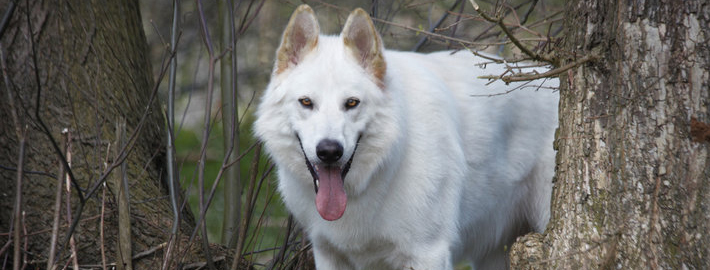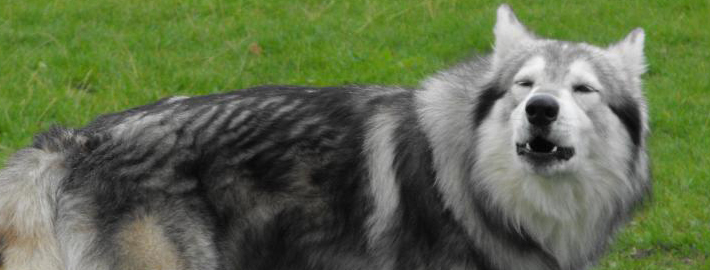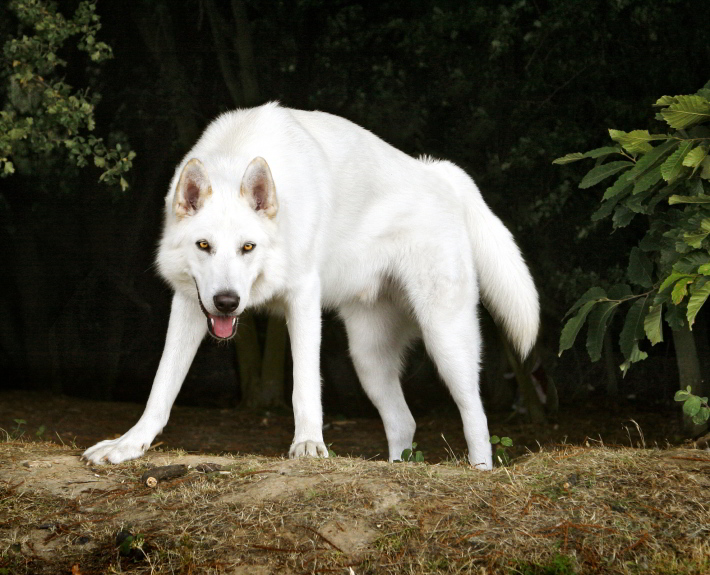What makes the Northern Inuit Dog Unique?
the Northern Inuit is ‘the new kid on the block’ being developed in the 1980’s. Often called ‘the Wolf Dog’ one look at these crossbreed dogs
Breed Groups
Page Contents
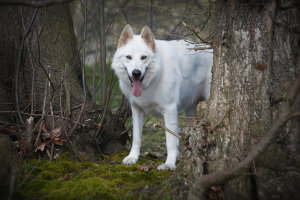
Is the Northern Inuit Dog Right For You?
Wolves have always generated attention. These animals have a mystic and mysterious appeal. Despite the near impossibility, some people of adventurous spirit would always want to have a wolf for a pet. A wolf in the home is not a viable option. These dogs after all are feral… dangerous. This is the reason why some people have settled on wolf hybrids. Wolf hybrids may not be as ferocious as the wolves but it can never be denied that these hybrids would still be intimidating to some people. In 1980s, a breeding program to develop a breed that has the looks of the wolf was started in Great Britain. The Inuit dog, a breed believed to have developed from the mating of a wolf and an Inuit dog, the Alaskan Malamute and the Siberian Husky were the foundation stock for the breeding program that resulted to the development of a wolf look alike, a breed that was given the Northern Inuit Dog despite its non-northern origin.
In 5 Words
- Dependable
- Gentle
- Friendly
- Calm
- Familial
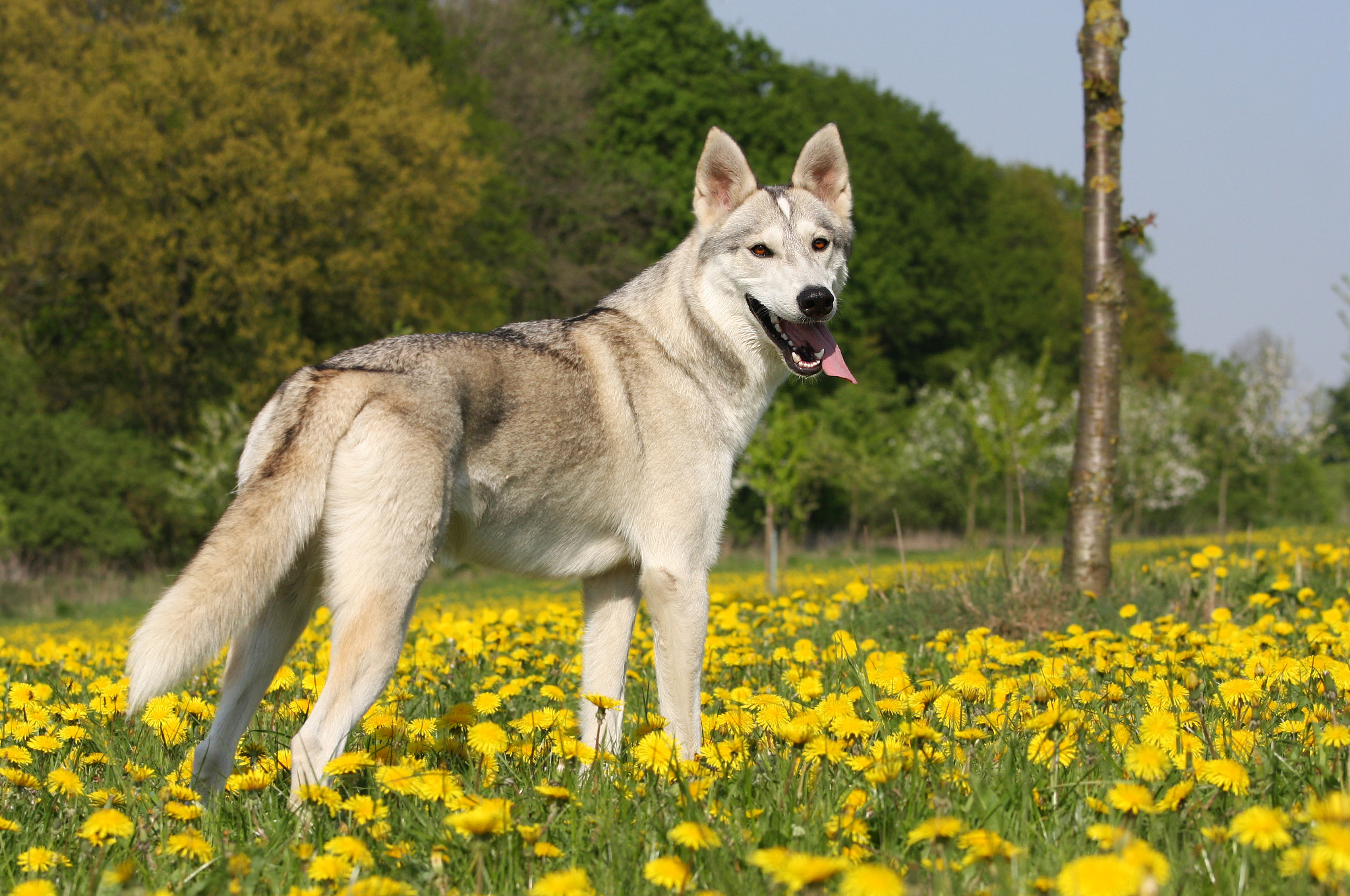
Characteristics
Learn About the Northern Inuit Dog
Description
General Description
The Northern Inuit resulted from a programmed breeding aimed to develop a breed that would have the impressive appearance of a wolf. The Northern Inuit Dog is a wolf look alike. Similar to a wolf, this dog of medium to heavy build has the smooth effortless and easy gait of a wolf. This breed’s not too broad head is well proportionate to the body. The skull that is rather broad between the ears tapers down to the almond shaped eyes. The wide set brown, amber or yellow eyes have an alert, inquisitive and friendly expression. This dog has a sloping stop and flat cheeks. Medium in length, the muzzle that appears to be snippy is gently tapering to a black nose. Winter noses are seen in some specimens. The jaws are strong. Black lips enclose strong large teeth that meet in a regular scissor bite. This breed has the strong straight body of a wolf that appears to be slightly longer than tall. The topline is level from withers to croup. Deep chest has large but flattened ribs. Not too large ears are erect and set wide apart. The neck is medium in length but proportionate to the overall size of the body. The strong well muscled neck is moderately arched and has a well defined ruff. When moving, the neck is slightly extended giving the dog a proud bearing. Set below the topline, the well furred bushy tail hangs down to the hocks when the dog is standing at rest. Tail is carried higher when the dog is alert or moving. The Northern Inuit Dog has a dense double coat that is harsh in texture. The undercoat is soft and dense; the outer coat is rather long. The hair is short on the head and legs and longer in the body. The hair gets very dense in winter. Undercoat is generally absent during shedding season. Shades of black, white, grey and sable are the accepted coat colors for this breed. Northern Inuit Dogs have markings that subtly blend into one another.
Short History of the Northern Inuit Dog
Eddie Harrison bred several rescue dogs of mixed breeds with German Shepherds, Siberian Huskies and Alaskan Malamutes in the 1980s. The result was the Northern Inuit breed we know today. The focus was to create a domesticated animal that looked much like a wolf but possessed the behavior and trainability of a dog. Others believe that Labrador Huskies or Canadian Eskimo Dogs were brought to the United Kingdom from the United States in the 1970s and crossbred with German Shepherds and Alaskan Malamutes. Multiple breed groups have been formed since then, including the Anglo Wulfdog, British Timber Dog and the Utonagan Society.
Temperament
Despite their wolf-life appearance, the Northern Inuit Dog has a very friendly demeanor and they are unlikely to show aggression. These dogs are very intelligent and quick-witted, so they require a strong leader in the family. This breed is not recommended for inexperienced dog owners, but they do tend to get along well with children – like all dogs, however, supervision is required when this breed is left with young children. It is important to note that these dogs require a good bit of attention – they are prone to developing separation anxiety when left alone too long. For this reason, it is often recommended that Northern Inuit Dogs be kept with another dog as a companion.
Caring for Your Northern Inuit Dog
Grooming & Bathing
Regular brushing is needed for this long coated breed that sheds heavily. During shedding season, the undercoat is completely shed and the dog needs daily brushing to help in the shedding process by removing dead hair. Long coat does not need clipping as it protects the dog from cold weather.
Exercise & Training
Moderate, regular exercise, such as long walks, are necessary for the Northern Inuit Dog. However, too much exercise at too young an age will damage joints.The Northern Inuit Dog may not be an easy to train dog as it is known to be stubborn and willful sometimes. A firm and confident owner will be needed to train this dog.

